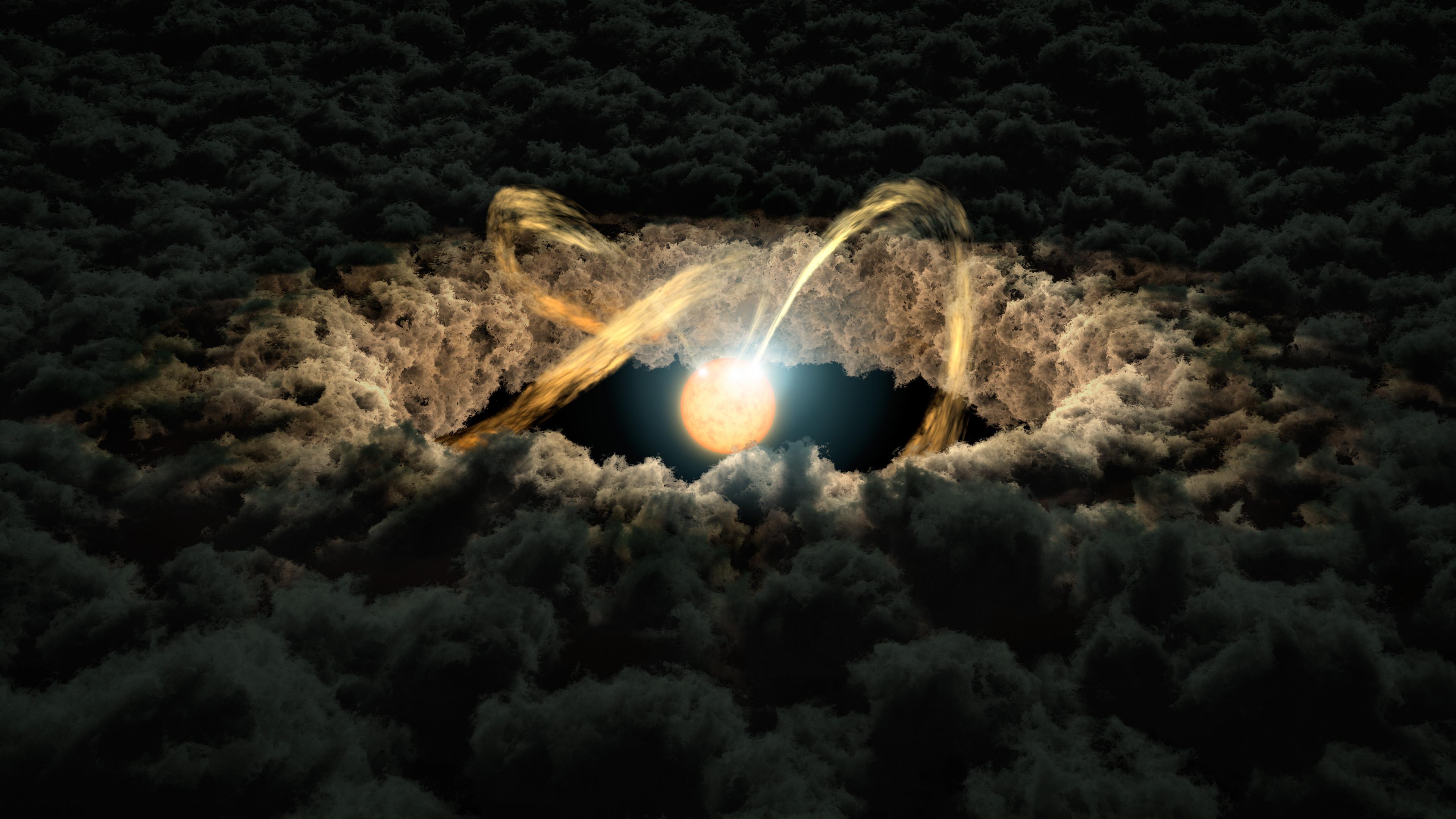Researchers may have spotted embryos of gas giant planets in nearby protostellar disk

Researchers at the RIKEN Star and Planet Formation Laboratory have studied a protostellar disk in one of the closest star-forming regions to Earth. Our home planet and the other planets in the Solar System were birthed from protostellar disks, rotating oblate swathes of dense gas and dust surrounding young newly formed stars.
Using data from the Atacama Large Millimeter/submillimeter Array (ALMA) in Chile and the Jansky Very Large Array (VLA) in New Mexico, Satoshi Ohashi and his colleagues found that the protostellar disk around the Class 0/I protostar L1527 IRS is 80-100 times wider than the distance from the Sun to the Earth (astronomical unit or AU). The disk is unstable and collapsing in a region roughly 20 AU from its young star.
VLA had previously identified several clumps of matter in the same area, and researchers believe that their formation may be driven by this gravitational instability.
The team also measured the temperature of the dust in different parts of this protostellar disk. Dust close to the star can reach a relatively warm temperature of up to 193 degrees Celsius. But on the far side of the clumps, the dust temperature dropped sharply, suggesting that the clumps are blocking the star’s radiation, chilling any dust in their shadow.
In the outermost parts of the disk, the dust temperature falls to around - 263 degrees Celsius - just 10 degrees above absolute zero.
According to Ohashi, this shaded, cold environment may affect the chemical composition of planets that form in the outer regions of the disk. The researchers now hope to observe other protostellar disks, with greater spatial resolution and sensitivity, to analyze whether this shadowing effect is common or rare.
Their findings are published in The Astrophysical Journal. More details can be found here.










